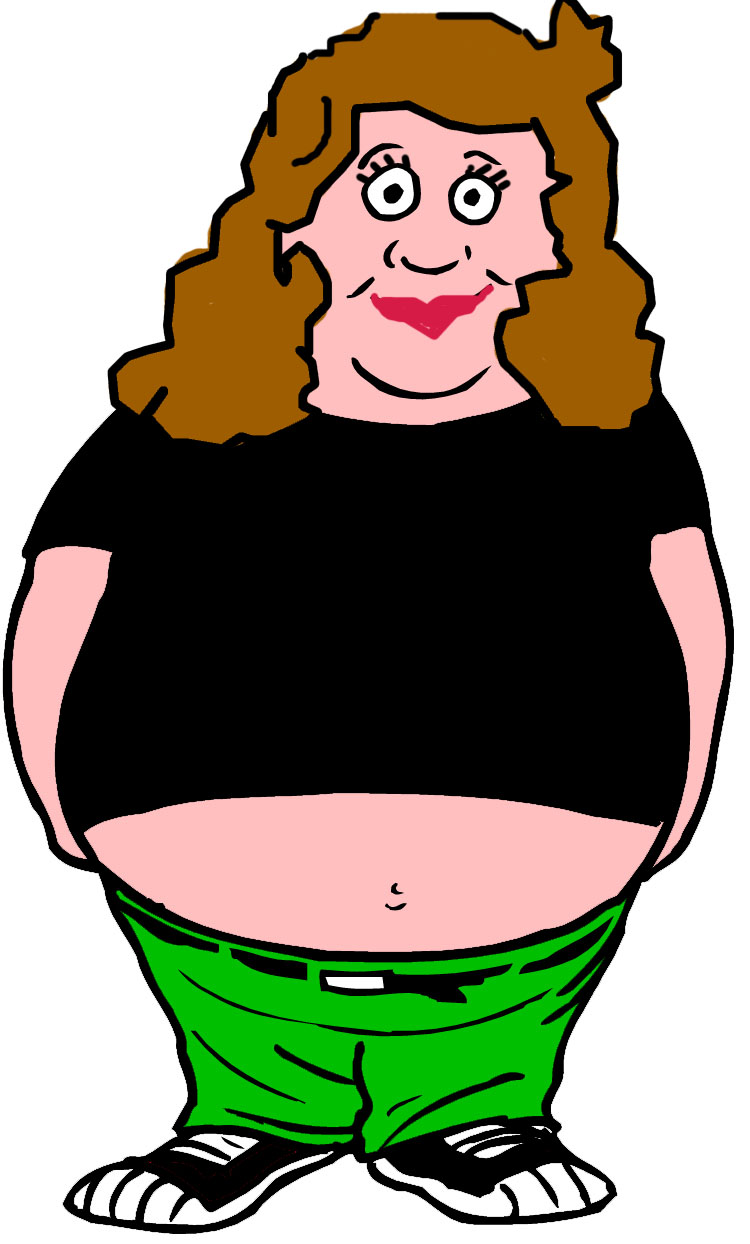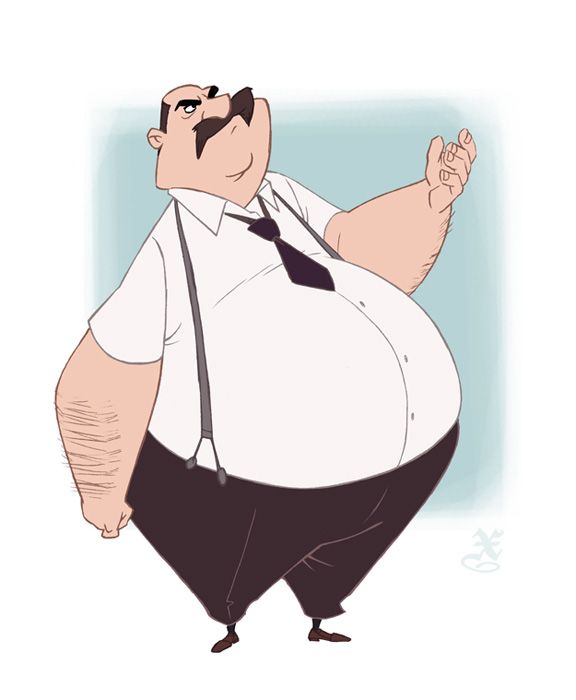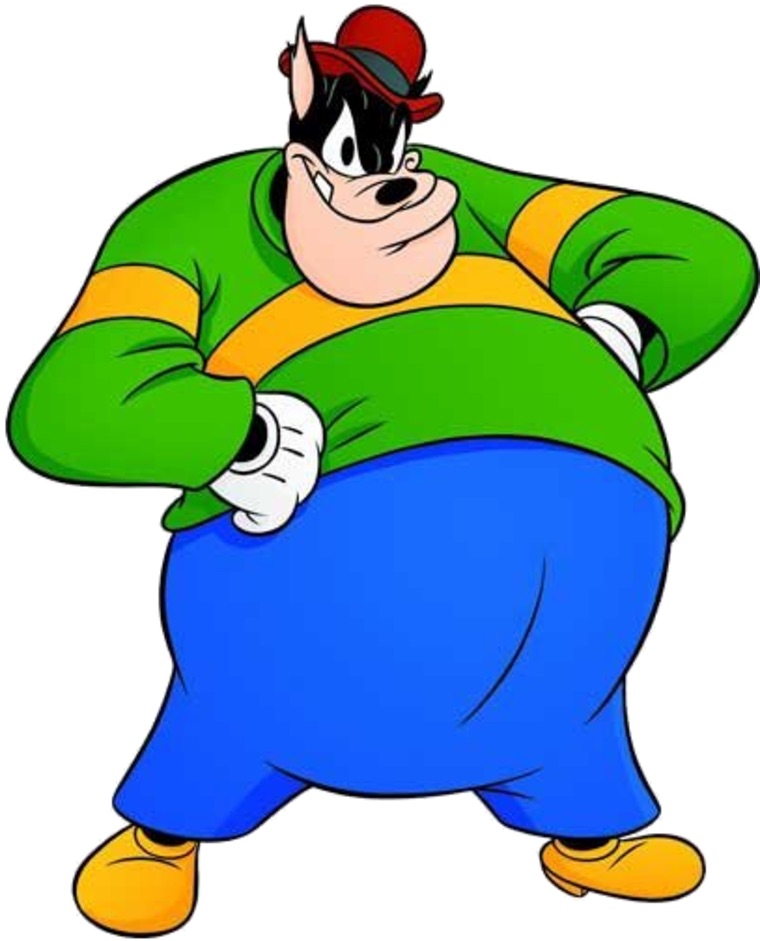Fat Cartoons: The Evolution And Cultural Impact Of Chubby Characters In Animation
Apr 18 2025
Have you ever wondered why fat cartoons are so iconic and memorable? From Homer Simpson to Patrick Star, these chubby animated characters have become cultural icons that resonate with audiences of all ages. These characters aren’t just about their weight; they represent personality, humor, and relatability. Let’s dive into the fascinating world of fat cartoons and explore why they’ve captured our hearts!
Fat cartoons aren’t just a design choice. They’re a storytelling tool that animators use to convey emotion, humor, and depth. These characters often stand out because of their unique traits, making them instantly recognizable. Whether it’s the way Homer Simpson drools over donuts or how Patrick Star’s love for jellyfishing makes him endearing, these characters bring something special to the table.
But there’s more to fat cartoons than meets the eye. In this article, we’ll explore the evolution of these characters, their cultural significance, and how they’ve shaped the world of animation. So grab your favorite snack, and let’s get started!
Read also:How Much Does Livvy Dunne Weigh A Comprehensive Look Into Her Journey
Table of Contents
The Art of Designing Fat Characters
Psychology Behind Fat Cartoons
Cultural Impact of Fat Cartoons
Read also:Aj Styles Wife The Untold Story Of A Wwe Superstars Better Half
Controversies Surrounding Fat Cartoons
Benefits of Fat Cartoons in Storytelling
The History of Fat Cartoons
Back in the day, fat cartoons weren’t as common as they are now, but they still played a significant role in animation history. Characters like Betty Boop’s grumpy uncle or Goofy’s early designs set the stage for what was to come. These early characters were often used as comic relief or sidekicks, but their presence was undeniable.
Fast forward to the 90s, and we saw a surge in fat cartoon characters. This era gave us classics like Homer Simpson, Garfield, and Patrick Star. These characters weren’t just sidekicks anymore; they became the stars of their shows, proving that fat cartoons could carry a story on their own.
Early Influences in Animation
Disney played a huge role in shaping the perception of fat characters. Characters like Goofy and Pluto were designed to be lovable and clumsy, traits that are still associated with fat cartoons today. The animation techniques used back then were simple yet effective, focusing on exaggerated movements to emphasize their size.
Famous Fat Cartoon Characters
Now, let’s talk about some of the most iconic fat cartoon characters that have left a mark on pop culture. From Homer Simpson’s love for donuts to Patrick Star’s quirky antics, these characters have become household names.
Top Fat Cartoon Characters
- Homer Simpson - The ultimate foodie and family man.
- Patrick Star - The lovable best friend with a heart of gold.
- Garfield - The lazy cat with a big appetite for lasagna.
- Shrek - The ogre with a big heart and an even bigger personality.
- Gustav - The musical bear from "The Aristocats."
The Art of Designing Fat Characters
Designing fat cartoon characters isn’t as simple as making them bigger. It’s about capturing their personality through their appearance. Animators use specific techniques to make these characters stand out, such as exaggerated features, soft curves, and playful expressions.
One of the key elements in designing fat characters is balance. Too much detail can make them look cluttered, while too little can make them appear flat. Animators often use bright colors and playful patterns to enhance their appeal.
Key Design Elements
- Exaggerated proportions to emphasize size.
- Soft, rounded shapes to convey friendliness.
- Vibrant colors to make them visually appealing.
Psychology Behind Fat Cartoons
There’s a lot of psychology behind why fat cartoons are so appealing. Research shows that humans are naturally drawn to round, soft shapes because they evoke feelings of comfort and safety. This is why fat cartoon characters are often associated with positivity and joy.
Additionally, these characters are relatable. Many people can see themselves in these characters, whether it’s through their love for food, their laziness, or their quirky personalities. This relatability is what makes them so memorable.
Why We Love Fat Cartoons
- They’re relatable and easy to connect with.
- They evoke feelings of comfort and joy.
- They often have unique personalities that stand out.
Cultural Impact of Fat Cartoons
Fat cartoons have had a significant impact on popular culture. They’ve influenced everything from fashion to music, and they’ve even sparked discussions about body positivity. Characters like Shrek and Patrick Star have become symbols of acceptance and inclusivity, showing that you don’t have to fit a certain mold to be loved.
Moreover, these characters have transcended age barriers. Kids and adults alike can enjoy their antics, making them a universal source of entertainment.
Breaking Stereotypes
One of the most important roles that fat cartoons play is breaking stereotypes. In the past, fat characters were often portrayed as lazy or unintelligent. However, modern fat cartoons challenge these stereotypes by showcasing their intelligence, wit, and charm.
Controversies Surrounding Fat Cartoons
Despite their popularity, fat cartoons haven’t been without controversy. Some critics argue that these characters perpetuate negative stereotypes about obesity. Others believe that they normalize unhealthy eating habits, especially among children.
However, many animators and fans argue that these characters are meant to be fun and lighthearted. They emphasize that the focus should be on the character’s personality rather than their appearance.
Addressing Concerns
- Encouraging healthy habits while still enjoying the characters.
- Promoting body positivity and acceptance.
- Highlighting the character’s strengths rather than their flaws.
The Future of Fat Cartoons
As animation continues to evolve, so do fat cartoon characters. Modern animators are creating more diverse and inclusive characters, focusing on their personalities rather than their appearance. This shift is helping to break down stereotypes and promote acceptance.
We can expect to see more fat cartoon characters in the future, each with their unique traits and stories. The possibilities are endless, and the impact they’ll have on culture will only grow stronger.
What’s Next for Fat Cartoons?
- More diverse and inclusive characters.
- Stories that focus on personality over appearance.
- Continued promotion of body positivity.
Benefits of Fat Cartoons in Storytelling
Fat cartoons offer numerous benefits in storytelling. They provide a unique perspective on life, often tackling serious issues with humor and grace. These characters can also serve as role models, showing that it’s okay to be different and that everyone has value.
Moreover, fat cartoons are great tools for teaching important lessons. They can help children understand complex emotions and situations in a fun and engaging way.
Key Benefits
- They promote acceptance and inclusivity.
- They tackle serious issues with humor and grace.
- They serve as role models for young audiences.
Conclusion
Fat cartoons have come a long way from their humble beginnings. They’ve evolved into cultural icons that resonate with audiences worldwide. From their unique designs to their relatable personalities, these characters have captured our hearts and minds.
So, the next time you watch your favorite fat cartoon, remember that there’s more to them than meets the eye. They’re not just characters; they’re symbols of acceptance, joy, and diversity. Share this article with your friends and let’s continue the conversation about the impact of fat cartoons in our lives!
Don’t forget to leave a comment below and let us know your favorite fat cartoon character!


